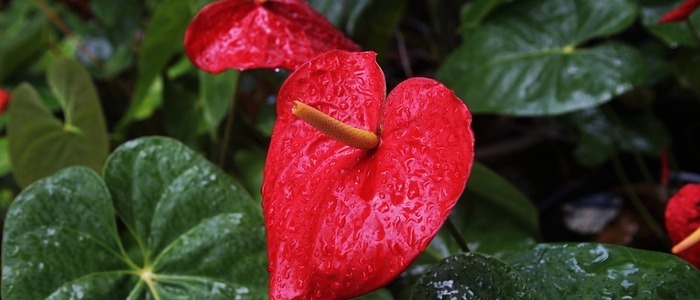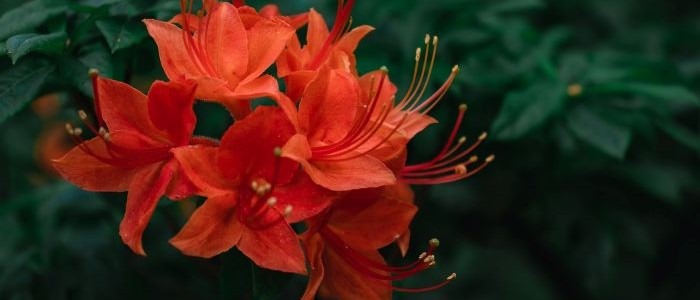The red Crown of Thorns plant (Euphorbia milii) is a stunning and popular houseplant often found in many homes. This exotic-looking succulent originated from Madagascar and features an array of star-shaped flowers with spiky bracts that resemble a crown, hence its name. It’s easy to care for and thrives in bright, indirect light.
When grown indoors, giving the Crown of Thorns plenty of sunlight, water when needed, and fertilize for a healthy plant is best. With proper care and attention, the Crown of Thorns will reward you with its beautiful flowers for years to come! Here’s a quick guide on how to properly care for a Crown of Thorns plant,
Crown of Thorns Plant Frequently Asked Questions
How do you take care of a red crown of thorns plant?
The Crown of Thorns plant prefers rich, well-draining soil. If your soil is heavy and clay-like, amend it with organic matter to ensure proper drainage. Fertilize your plant occasionally during the growing season with a balanced fertilizer diluted at half the recommended strength.
Does the crown of thorns plant like a lot of water?
It really is a good idea to avoid overwatering the Crown of Thorns as this can lead to root rot and fungal diseases. Allow it to dry out between waterings and provide plenty of air circulation around the plant.

Ideal Growing Conditions for the Red Crown of Thorns Plant
The Crown of Thorns plant Euphorbia milii) prefers bright, indirect light and warm temperatures between 65-80 degrees Fahrenheit. Even though it’s a succulent and has some drought tolerance, it does need to be watered occasionally. During the growing season (spring through fall), water is enough so that the soil is evenly moist. During the winter, reduce watering to about once a month or less. The Crown of Thorns is not very tolerant of cold temperatures and may suffer from frost damage if exposed to freezing temperatures. Make sure it’s in an area that does not dip below 50 degrees Fahrenheit.
The Crown of Thorns also prefers rich, well-draining soil. If your soil is heavy and clay-like, amend it with organic matter to ensure proper drainage. Fertilize your plant occasionally during the growing season with a balanced fertilizer diluted at half the recommended strength. Once established, this plant is fairly low maintenance and should only require occasional pruning or pinching off of faded flowers.
Avoid overwatering the Crown of Thorns as this can lead to root rot and fungal diseases. Allow it to dry out between waterings and provide plenty of air circulation around the plant. If necessary, move it to a location with more room or better light. Additionally, you should be on the lookout for pests such as mealybugs, whiteflies, and spider mites.
Treat any infestations as soon as possible with an appropriate insecticide. With proper care and maintenance, your Crown of Thorns will be a beautiful addition to your garden for many years to come.
Potting Soil and Containers for Your Red Crown of Thorns Plant
When it comes to potting soil, the best option for your Crown of Thorns is a light, well-draining potting mix. Mixing in some perlite or vermiculite can help with drainage. It’s also important to use a container with adequate drainage holes so that excess water can escape and the soil stays evenly moist.
Clay or terracotta pots are ideal for Crown of Thorns plants as long as they have plenty of drainage holes. Plastic containers are also an option, but they should be filled with soil that contains plenty of organic matter to help keep the soil loose and airy.
You may also, consider adding a few inches of gravel or stones to the bottom of your container before adding the soil. This will help prevent any drainage problems and give your Crown of Thorns’ roots plenty of oxygen. When watering, make sure not to overwater your plant as this can cause root rot and fungal infections.
Water when the top inch of soil is dry and adjust accordingly depending on the season, as more water will be needed in the summer months when it is hot and dry.
Fertilize your Crown of Thorns once a month with a diluted solution of balanced liquid fertilizer. Make sure to follow label instructions to ensure that you are not over-fertilizing your plant. Finally, prune your plant regularly to keep it healthy and promote new growth. Trim any dead or damaged stems from the plant, taking care not to damage the healthy stems in the process.
This will help keep your Crown of Thorns looking its best for many years to come!
Common Pests and Diseases Affecting the Crown of Thorns Plant
Common pests and diseases that can affect Crown of Thorns plants include aphids, mealy bugs, scale insects, fungal infections, leaf spots, and root rot. To prevent these issues from occurring in the first place, make sure to keep the environment around your plant clean and free from debris. Additionally, inspect your plant regularly for signs of pests or diseases, such as the presence of sap or wilting leaves.
If you notice anything unusual with your Crown of Thorns plant, try to identify the issue and take steps to treat it quickly in order to avoid further damage. Spraying a horticultural oil on your plant can help prevent pests from taking hold, while regular fertilization with a balanced fertilizer can help to keep your plant healthy and free of disease.
Finally, make sure to water your Crown of Thorns deeply but not too often in order to encourage strong root growth and discourage root rot. With the right care and attention, you will be able to enjoy this unique and beautiful houseplant for many years to come.
Tips for Pruning and Propagating Your Crown of Thorns Plant
1. Prune your Crown of Thorns plant sparingly and only when necessary, such as to remove dead or damaged branches. You should also shape the plant occasionally to maintain its desired form.
2. Propagation is best done by cutting off a healthy stem from the main plant and allowing it to develop roots in water or soil. Be sure to use clean pruning shears or scissors and dip the cut end in the rooting hormone before planting.
3. To encourage your Crown of Thorns plant to grow fuller and bushier, pinch off the tips of its stems when they reach about three inches long. The pinching process should be repeated every few months for optimal results.
Conclusion
In conclusion, taking care of a red Crown of Thorns plant is not difficult. Regular pruning and propagation will help the plant stay healthy and encourage it to grow fuller and bushier. With these simple steps, you can enjoy long-lasting beauty from your red Crown of Thorns.
Other House Plants With Red Flowers













